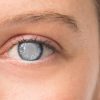The trend of home workouts is on the rise as individuals favor the peace and convenience of exercising at home over the hustle and bustle of local gyms.
Despite putting effort into setting up your home gym to meet your fitness needs, you might still be lacking some crucial weight machines.
One such apparatus, the leg press, is commonly utilized for fortifying the upper legs but may not be feasible to own due to its bulk, heaviness, and price.
If you lack space or funds for a leg press machine, or simply prefer to avoid the gym, do not worry. You can still reap similar benefits through home exercises that necessitate nothing more than a mat and your own body weight. Hooray for equipment-free workouts!
Keep reading to explore the perks of the leg press, the specific muscles it targets, and the top alternatives to the leg press that you can experiment with at home.
Advantages of the Leg Press
1. Boosted Leg Endurance
Skylar Henderson, a Certified Personal Trainer and the proprietor of Vitality Fitness, emphasizes that “The leg press replicates a fundamental daily movement, such as getting up from a seated position.” By exercising your legs with the leg press, actions like climbing stairs, standing up from kneeling, or rising from a chair become less taxing and more straightforward.
2. Development of Muscle Mass
The leg press works out multiple leg muscles, inclusive of the quadriceps, hamstrings, glutes, and calves — critical muscles for tasks like running, leaping, and executing bodily movements in daily routines, as highlighted by Ben Jenks, a Certified Personal Trainer.
Moreover, given that the leg press is a weight-bearing workout, it can contribute to muscle delineation if that aligns with your objectives.
3. Low-Impact Physical Activity
Jenks points out that the leg press is a low-impact exercise, offering a gentler experience on the joints compared to high-impact activities like running. This aspect makes it suitable for individuals with joint problems or those in recovery from injuries.
4. Enhanced Balance, Stability, and Explosive Energy
Jenks clarifies that the synchronized leg extension fosters neuromuscular connections, aiding the body in generating robust, controlled movements. This advantage not only improves your gym performance but also has a positive impact on your daily functions.
Muscles Engaged by the Leg Press
“The leg press activates all primary muscle groups in the lower body,” affirms Jenks. “This encompasses the quadriceps, which are responsible for knee extension, and the hamstrings, which facilitate both knee flexion and extension.”
Furthermore, this exercise zeroes in on the glutes and calf muscles (gastrocnemius and soleus).
Prime Alternatives to the Leg Press
1. Air Squat
- Stand erect with feet shoulder-width apart and arms at your sides.
- Extend arms out in front of you, bend knees, and shift hips rearward as if descending onto a seat.
- Lower into a squat position until thighs align parallel to the ground.
- Push through the heels to return to a standing posture.
- Repeat the sequence.
2. Reverse Lunge
- Commence by standing with feet hip-width apart and arms beside you.
- Step backward with the left foot, landing on the ball of the foot.
- Bend the left rear knee into a lunge stance, descending until both knees form a 90-degree angle.
- Maintain an erect trunk and forward hips.
- Propel off using the left foot to revert to the initial position.
- Repeat on one side or alternate between legs.
3. Forward Lunge
- Stand with feet hip-width apart and arms by your side.
- Take a step forward with the right leg, bending both knees into a 90-degree angle.
- Descend towards the floor with a tall chest until the back knee almost touches the ground.
- Thrust through the right foot to return to the starting point.
- Repeat on one side or alternate legs.
4. Squat Kick
- Stand tall with feet shoulder-width apart and arms at your sides.
- Extend arms forward, bend knees, and shift hips back as if lowering onto a chair.
- Descend into a squat position.
- Transfer the weight to the left foot as you ascend.
- Upon rising, extend the right foot forward with a kick.
- Bring the foot back to the floor and repeat, alternating between legs.










